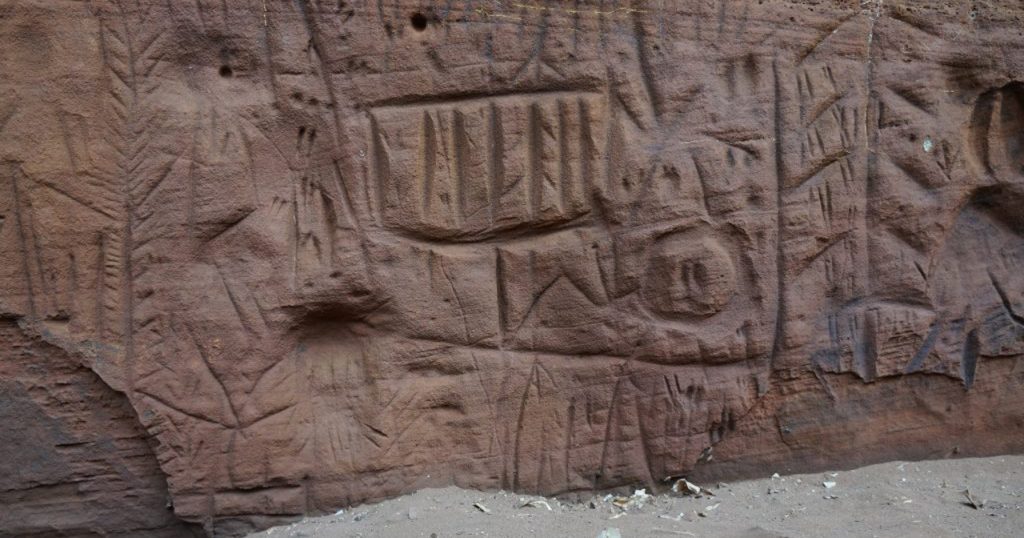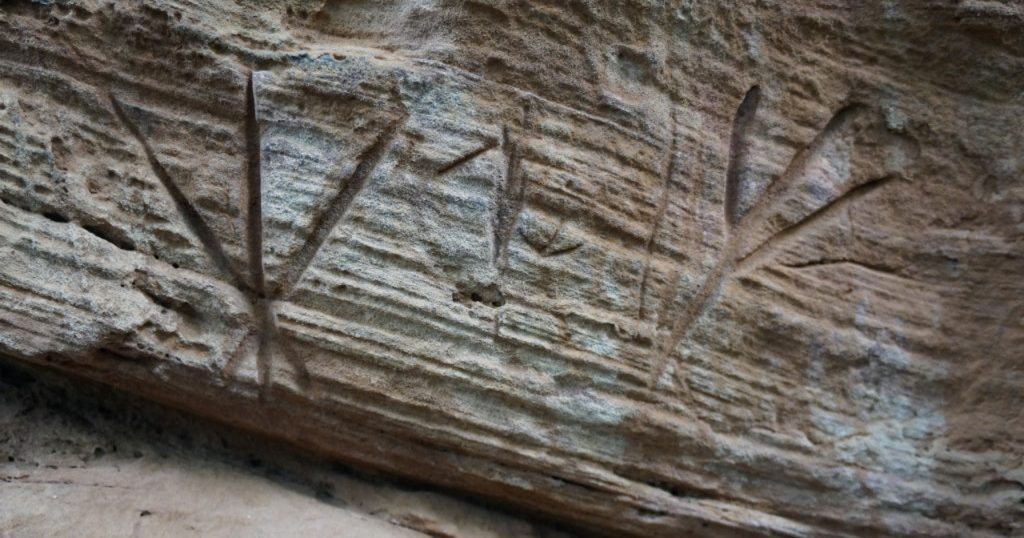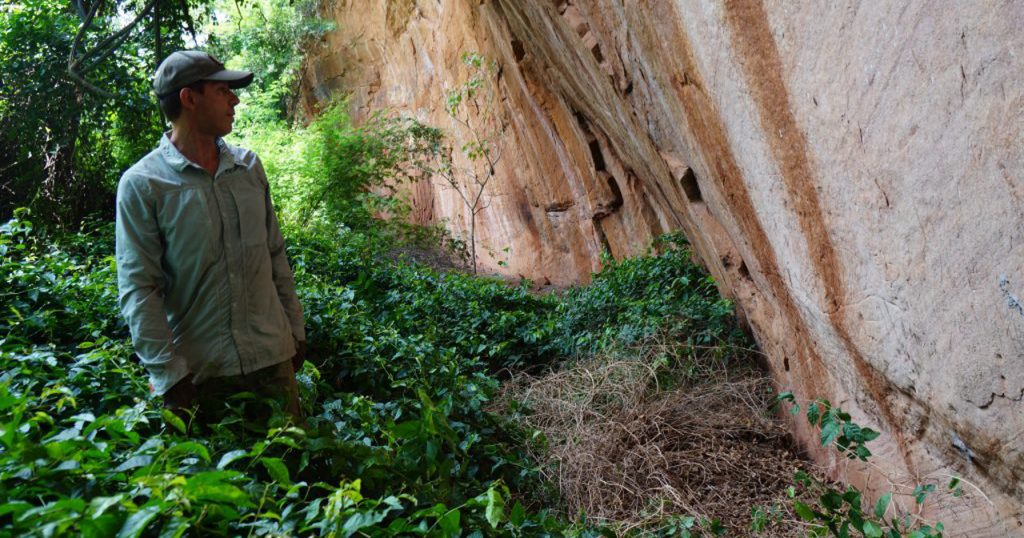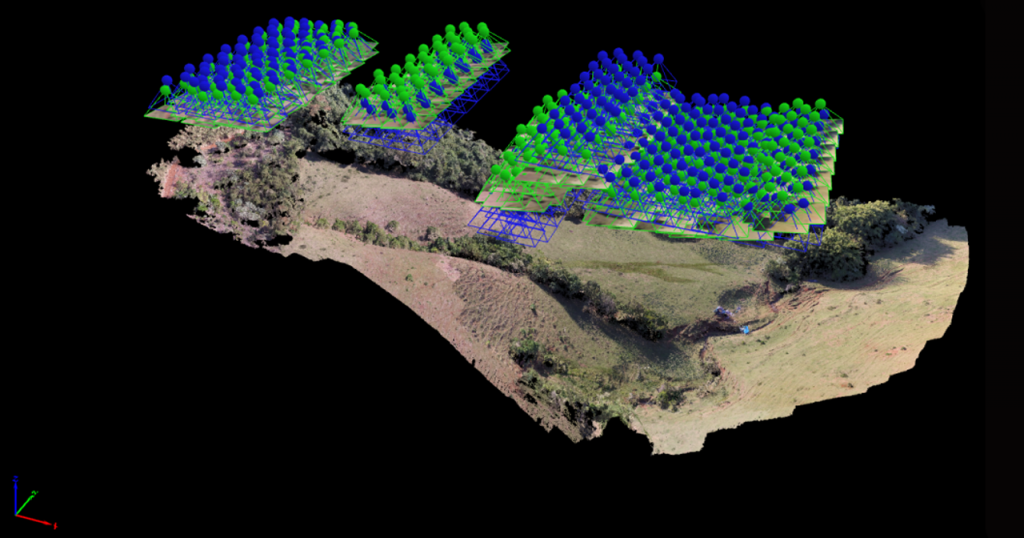
In the city of Ribeirão Bonito, central region of the state of São Paulo, researchers from the University of São Paulo (USP), Federal University of Paraná (UFPR), and University of Campinas (Unicamp) excavated a panel of 80 meters in length, of which 50 linear meters feature sculpted figures. The engravings follow a pattern observed in other archaeological sites in the region and resemble bird footprints, which archaeologists call “three digits.” According to Astolfo Araujo, professor of the Museum of Archaeology and Ethnology (MAE) of USP and coordinator of the excavation, the panel is the largest ever found in the state of São Paulo. Besides the figures, chipped stones, animal bones, and burnt charcoal were found on the site.
From USP, professors from MAE, the Institute of Biosciences (IB), and the Polytechnic School (Poli) took part in the project. The team has explored the region since 2014, in a project funded by FAPESP aiming to study the Paleo-Indian occupation of the state of São Paulo – people who lived at the beginning of the current geological period, the Holocene. In 2015, the researchers located the oldest archaeological site of the state, in the municipality of Dourado, less than 20 km away from Ribeirão Bonito. Named Bastos, the place contained vestiges over 12.5 thousand years old. Local residents then indicated the location of the new panel.

The Brazilian Southeast is a key part of the understanding of population movements in eastern South America, and the diversity of rock art that has been found by researchers can help to reveal who passed through the region. “The impression we have is that São Paulo was a meeting point for populations coming from the north, from the east, via Pantanal, and from the south, via Pampas,” says the archaeologist. According to the researcher, it was believed that the region did not have rock art in abundance, and the panel of Ribeirão Bonito contributes to challenge this belief.
“The samples have not yet been sent to dating, but we have found material up to 1.70 m deep, suggesting that the panel is quite old,” says Astolfo Araujo

Sites for download
The researchers are developing virtual models of the sites found in partnership with the Interdisciplinary Center for Interactive Technologies (CITI), linked to the Polytechnic School (Poli) of USP. Marcelo Zuffo, professor of the Department of Electronic Systems Engineering of Poli and coordinator of CITI, explains that three data collection techniques were used in the shelter of Ribeirão Bonito: laser scanning, scanning via photogrammetry – tens of thousands of photos taken by drones –, and photogrammetry with 360-degree cameras.
Marcelo Zuffo says that the creation of 3D prototypes has a number of advantages. “Interdisciplinary teams working with archaeology can analyze information without the stressful conditions of field work. And the physical and temporal constraints are also eliminated, since the researchers can access, in the collections of the university, sites up to 500 km away from the capital of São Paulo.” According to Zuffo, intensive scanning can eventually detect patterns the human eye cannot see. Another advantage is that if the sites are targeted by vandalism or nature interference, there is a digital model that preserves their information.
“The method used by professor Zuffo’s team allows 3D reproduction with millimetric accuracy, being possible to preserve the engravings for future generations, besides allowing their analysis by researchers anywhere in the world. One only has to send the data over the internet, and someone will be able to ‘download’ the archaeological site and reproduce it,” confirms Araujo.

The next step of the research, according to Marcelo Zuffo, will be the iconic analysis of the engravings that have been found in the state of São Paulo, in partnership with the School of Philosophy, Languages and Literature, and Human Sciences (FFLCH) of USP.More information: astwolfo@usp.br and mkzuffo@usp.br
Text: Manuela Ferraro – Jornal da USP
